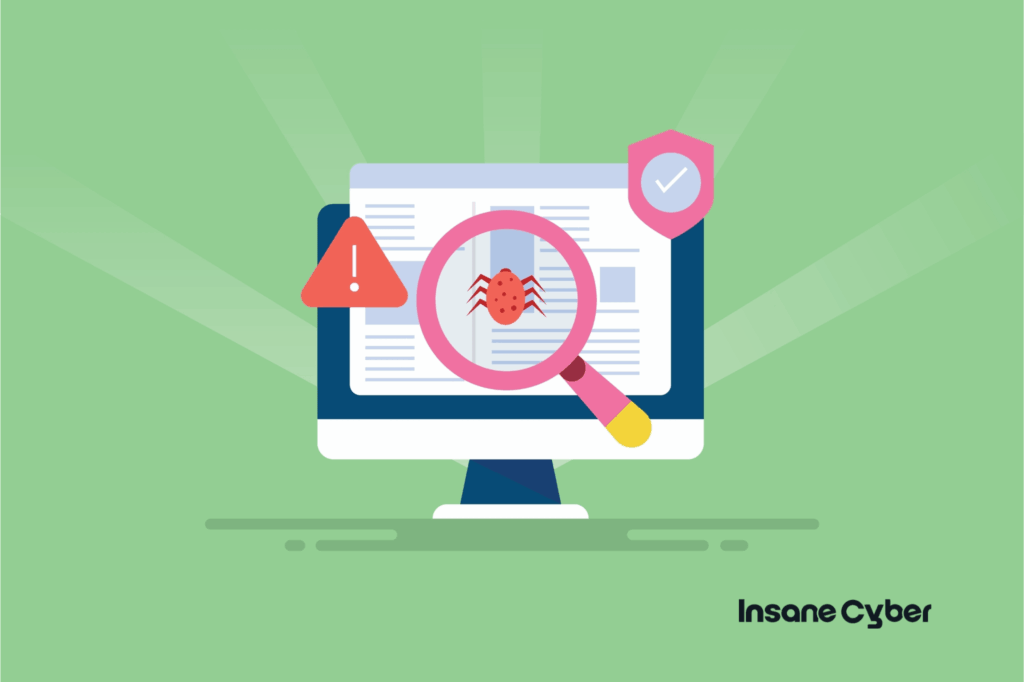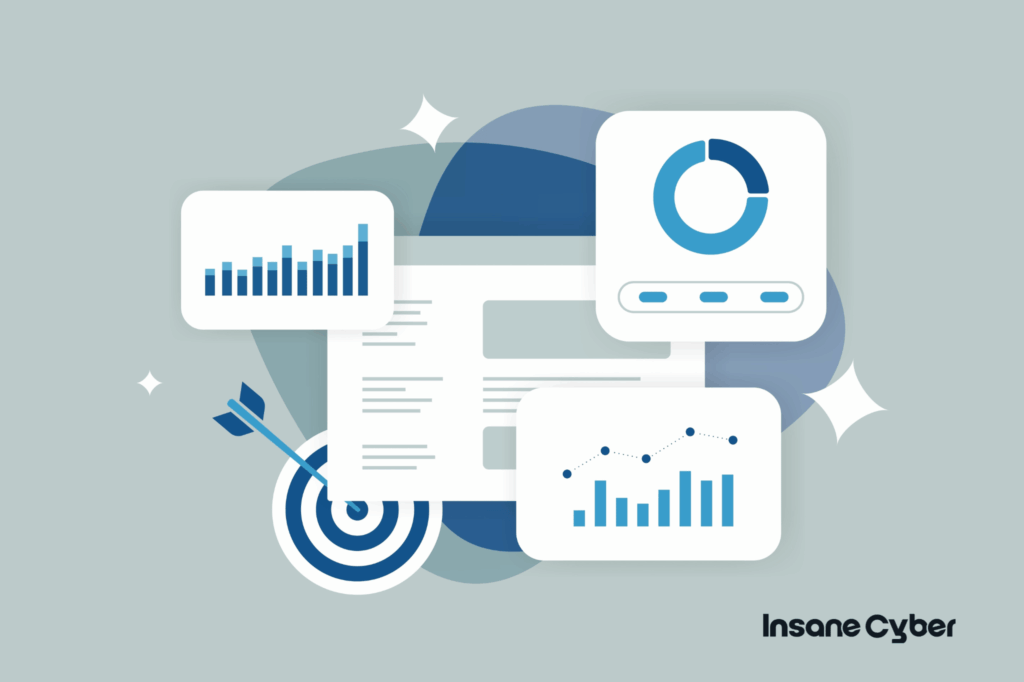In an era of increasingly sophisticated cyber threats, particularly those stemming from nation-state actors, organizations must adopt a proactive and structured approach to cyber defense. This guide outlines key steps in developing a threat hunting strategy that leverages both technology and collaboration to protect critical systems—especially those tied to national defense.
Every successful threat hunt begins with understanding the latest threat intelligence. Reports from organizations like CISA (Cybersecurity and Infrastructure Security Agency) provide insights into how advanced adversaries operate. However, these reports often require deeper analysis to translate high-level recommendations into specific actions that security teams can take.
To bridge this gap, threat hunting teams should leverage several complementary methods:
Combining these methods not only improves the speed and accuracy of threat detection, but also ensures that intelligence is actionable and relevant to your organization’s unique risk profile.
To transform this raw intelligence into actionable steps, security teams rely on threat intelligence platforms such as Recorded Future, Anomali, or IBM X-Force Exchange. These platforms act as aggregators, collecting data on threats from a wide array of sources—think government advisories, dark web monitoring, and industry reports.
What makes these platforms especially valuable is their ability to contextualize this information:
Ultimately, leveraging threat intelligence platforms ensures that organizations don’t just react to yesterday’s threats—they stay a step ahead, proactively defending against the ever-evolving tactics used by sophisticated nation-state actors.
Threat hunting can take several forms, each serving a distinct purpose as organizations strive to uncover elusive adversaries:
Structured Threat Hunting: This approach is fueled by external threat intelligence, such as advisories from CISA or reports on active nation-state campaigns. Analysts begin with a specific hypothesis (“Is our environment vulnerable to the same lateral movement techniques attributed to APT29?”) and methodically investigate relevant system logs and events.
Unstructured Threat Hunting: Here, security professionals lean on their instincts and experience, reviewing unusual activity without a fixed starting point. For instance, a sudden spike in outbound network traffic or unexpected PowerShell commands could trigger an unstructured hunt, helping teams spot emerging or novel threats that evade traditional detection.
Entity-Driven Threat Hunting: This method zeroes in on particular users, endpoints, or network assets. If, for example, the finance team’s accounts are repeatedly flagged by the SOC (Security Operations Center) for odd behavior, hunters focus their efforts on these “entities” to uncover hidden persistence mechanisms or lateral pivot points.
By combining these techniques, organizations sharpen their threat detection capabilities and close the gaps adversaries exploit.

Integrating real-time intelligence with high-fidelity scanning can dramatically sharpen a threat hunter’s ability to respond to nation-state attacks. Rather than sifting through overwhelming volumes of alerts, these tools distill vast data streams into actionable insights. This means security analysts can detect suspicious activity—including the use of malicious infrastructure from sources flagged in CISA or MITRE ATT&CK reports—as soon as it emerges.
Key advantages include:
In practice, this allows security teams to move swiftly from simply observing an attack to actively disrupting it—closing the gap between initial reconnaissance and full-scale mitigation.
Security teams can gain clarity by visualizing attack patterns using platforms such as Miro. This process involves breaking down the attack into components known as tactics, techniques, and procedures (TTPs), such as:
Visualizing these patterns enables teams to better understand how an attack progresses and to spot weak points within their defenses.
At its core, TTP threat hunting is the proactive analysis of the tactics, techniques, and procedures that cyber attackers use. By mapping out these behaviors, teams position themselves to anticipate adversary moves and counter threats before they escalate. This approach helps organizations stay one step ahead of malicious activity—transforming threat intelligence from static reports into actionable insights that guide real-time defense.
Why Visualization Matters in Threat Intelligence
Turning complex data into visual formats enhances a team’s ability to analyze and respond quickly. Here’s how visual modeling helps:
Ultimately, visualization serves as a bridge between raw data and actionable insight.
But visualization is only part of the equation. To truly stay ahead of nation-state adversaries, security teams also need tools and workflows that streamline investigation and response. The most effective approaches combine visual mapping with enhanced threat detection capabilities—such as real-time command and control (C2) tracking, bulk enrichment of indicators, and advanced fingerprinting techniques like JA4+. These allow teams to expose hidden threats more rapidly and map adversary infrastructure with greater accuracy.
By integrating visual analysis with automation and deep indicator investigation, organizations can move beyond reactive defense. The result: more efficient threat hunts, greater visibility across the attack surface, and the ability to make proactive, informed decisions when every second counts.
Layering analytical technologies, such as advanced analytics and machine learning, significantly elevates the effectiveness of a threat hunting program. These tools excel at rapidly processing massive datasets—far beyond what a human analyst could feasibly comb through—surfacing subtle irregularities that may signal hidden threats.
Machine learning models, for instance, can establish baseline “normal” behaviors for network traffic, user activity, or system performance, then flag deviations that don’t fit established patterns. These anomalies become investigative leads, guiding human hunters to potential stealth tactics that would otherwise fly under the radar.
The advantage here is not just speed and scale, but also depth: automated analysis can spot needle-in-a-haystack events that manual reviews would likely miss, paving the way for earlier detection of sophisticated attackers before significant damage is done.
The integration of AI-driven detection and intuitive workflows fundamentally changes how security teams approach threat hunting. With the power of artificial intelligence, vast amounts of threat data are sifted and prioritized in real time—pulling from sources like CISA advisories or MITRE ATT&CK frameworks—to surface activity that most closely matches known nation-state adversarial patterns.
These tools do more than just automate detection:
Combined, these capabilities transform threat hunting from a reactive exercise into a dynamic, proactive defense—empowering teams to anticipate, detect, and disrupt sophisticated adversaries before significant damage occurs.
Why Attackers Use Multi-Layered Strategies
Sophisticated attackers typically don’t rely on a single method. They employ multiple tactics simultaneously or in sequence to improve their chances of bypassing defenses.
For example, they may begin with phishing to gain access, escalate privileges using stolen credentials, and then move laterally to sensitive systems. This chain of actions allows them to achieve objectives such as data exfiltration or service disruption more effectively.

To keep pace with these evolving threats, security teams rely on a blend of tools and platforms that enable deep analysis and rapid detection. Integrating solutions like Security Information and Event Management (SIEM) systems and Endpoint Detection and Response (EDR) tools is crucial for collecting and correlating data across the entire infrastructure.
By combining the power of these technologies, organizations can filter out the noise, focus on advanced threats, and build a comprehensive threat-hunting strategy. This ecosystem not only improves detection but also empowers teams to respond to sophisticated, multi-stage attacks in real time.
Understanding “Attack Flows” and the MITRE ATT&CK Framework
Attack Flows are structured sequences that illustrate how a threat actor may link various TTPs in an actual attack. Based on the MITRE ATT&CK framework, these flows help security professionals dissect complex campaigns.
A concrete example: a security team once noticed suspicious activity on a critical server. By referencing the MITRE ATT&CK framework, they quickly mapped the behavior to the “OS Credential Dumping” technique (Technique ID: T1003)—a common method attackers use to extract login credentials. This identification allowed the team to act swiftly, neutralizing the threat before it could escalate or spread.
Through these flows, organizations can evolve from reactive defense to strategic anticipation. By learning to recognize and visualize these patterns, defenders improve their readiness to respond not just to what’s happening now, but to what might happen next.
Traditional security tools can overwhelm analysts with alerts—many of which turn out to be harmless anomalies rather than actual threats. This is where AI and machine learning step in as game-changers. By continuously analyzing data at scale, these technologies learn to distinguish normal activity from genuine indicators of compromise.
According to reports from organizations like Gartner, incorporating AI and machine learning doesn’t just make threat detection more robust—it also dramatically shrinks the time spent chasing down dead ends. The result: faster response, less burnout, and a leaner, more effective defense posture.
Artificial intelligence (AI) and machine learning have become vital tools in the ongoing battle against cyber threats. These technologies excel at sifting through massive volumes of security data—far more than any human analyst could process—and zeroing in on subtle anomalies that might otherwise be missed.
Organizations like Microsoft and Palo Alto Networks incorporate AI-powered analytics in their security platforms, empowering security teams to respond decisively to complex threats—sometimes before attackers even realize they’ve been detected. This proactive approach not only boosts detection rates but also amplifies the efficiency of security operations, allowing defenders to stay a step ahead in the evolving threat landscape.

With a growing landscape of advanced threats, security teams often find themselves navigating a maze of methodologies. Two common tactics—cyber threat hunting and TTP (Tactics, Techniques, and Procedures) hunting—sound similar but play distinct roles in the defense playbook.
Cyber Threat Hunting: This is a wide-angled, proactive search for signs of compromise within the network. Rather than waiting for alerts, teams dig into logs, analyze network behaviors, and hunt for subtle indicators that might reveal hidden intrusions. It’s akin to combing through a forest in search of broken branches—the clues are sometimes obscure, but the goal is to detect threats before damage is done.
TTP Hunting: Here, the approach sharpens its focus. Instead of casting a wide net, TTP hunting zeroes in on the specific techniques, tactics, and procedures threat actors are known to use—often informed by frameworks such as MITRE ATT&CK. This method doesn’t just seek evidence of past attacks; it hunts for the precise footprints and maneuvers adversaries rely on, allowing teams to detect emerging threats and preemptively shore up defenses for the next move.
Think of cyber threat hunting as scanning for any signs of disturbance, while TTP hunting is about following in the adversary’s exact footsteps, mapping out their tactics to predict and block their next advance. Both disciplines work hand in hand, but TTP hunting provides that crucial, granular view—turning broad vigilance into focused anticipation.
Amidst the fast-moving chess game of modern cybersecurity, threat-hunting platforms act as command centers for defenders. These solutions equip security teams with specialized tools to proactively search for lurking threats—often long before automated systems sound the alarm.
Threat-hunting platforms typically combine several core capabilities:
Instead of reacting to alerts after the fact, security professionals can leverage these platforms to:
In short, threat-hunting platforms transform raw data and intelligence into actionable insight, clarifying where to focus energy and ultimately enabling teams to take a proactive, rather than purely defensive, stance. With these capabilities, organizations can outpace adversaries, shutting down malicious activity before it snowballs into a larger breach.
You don’t need an army of analysts to get started with TTP (tactics, techniques, and procedures) threat hunting. Even a small security team can make tangible progress by being resourceful and methodical.
Here’s how to get started:
By building these hunting practices into your regular routine, even the smallest teams can close the gap on emerging adversary tactics and make smarter use of their existing security investments.

Industries ranging from finance to healthcare are turning to TTP (Tactics, Techniques, and Procedures) threat hunting to safeguard their most valuable data. The way organizations leverage these methods depends on the risks they face and the regulations that govern them.
Financial Institutions: Banks and fintech companies proactively monitor for signs of credential theft or lateral movement that might suggest an attacker is trying to access client accounts. By mapping out likely attack paths using frameworks like MITRE ATT&CK, teams can quickly zero in on abnormal behaviors—such as unusual wire transfers or access to high-value databases.
Healthcare Providers: Hospitals use TTP tracing to detect actions consistent with ransomware or data exfiltration attempts, especially given the sensitivity of patient records. Security analysts hunt for early warning signs, like unauthorized access to electronic health records or attempts to disable endpoint protection systems.
Retail and E-commerce: For businesses processing large volumes of customer transactions, TTP-centric threat hunts focus on phishing campaigns targeting employees or card-skimming malware lurking on payment portals. Continuous monitoring for these patterns allows rapid isolation of compromised systems and helps limit the fallout.
Government and Public Sector: Agencies often encounter nation-state threats using advanced persistent techniques. By dissecting TTP patterns, these organizations can set up specific alerts—such as for privilege escalation or unusual data tunneling—tailored to the threat landscape outlined in industry reports from sources like CISA.
No matter the sector, the common thread is clear: By understanding how adversaries operate, organizations can proactively hunt for subtle warning signs and intervene before valuable data is compromised.
A real-world illustration of these concepts can be seen in the response to the SolarWinds supply chain compromise. Security teams who practiced active threat hunting were able to spot subtle signs of intrusion—like odd patterns in authentication attempts and the misuse of legitimate credentials—amidst the noise of regular activity.
By deliberately searching for behaviors that didn’t fit established baselines, these defenders detected irregular movements within their networks. This early detection allowed them to contain the threat and prevent it from escalating into widespread disruption. The episode highlights why a proactive mindset—focused on surfacing the anomalies that slip past automated alerts—is critical for uncovering both familiar and emerging threats.
Key observables are specific data points that indicate malicious activity. Understanding these indicators is essential to detecting threats early. Some examples include:
A notable technique to watch for is NTDS.DIT credential theft, where attackers target Active Directory for password data. When observables are linked across multiple stages, they help build a narrative that can inform rapid defensive action.
During the investigation phase, threat hunters are not just looking for isolated suspicious events—they want to determine whether activity is benign or to assemble a complete picture of malicious behavior. Tools such as Endpoint Detection and Response (EDR) platforms are often employed to analyze data and surface hidden threats within the environment.
A regularly updated threat intelligence lifecycle is crucial here. It helps hunters eliminate false positives and validate potential threats by correlating observables with known tactics and emerging indicators. This ongoing refinement ensures that detection logic remains relevant and effective, ultimately leading to faster, more accurate incident response.
Enriched security telemetry goes beyond basic logging by adding valuable detail and context to every event. This extra layer of insight is critical during investigations, helping teams quickly connect the dots and piece together an accurate timeline of an attack.
Armed with this level of context, incident responders can move from reactive hunting to proactive threat disruption—fixing vulnerabilities, containing attackers in real time, and minimizing damage before it spreads.
Modern security teams increasingly turn to large language models (LLMs) and machine learning to keep pace with ever-evolving threats. These technologies automate the heavy lifting of identifying and analyzing indicators of compromise (IOCs), making detection faster and more reliable.
Here’s how these tools streamline the process:
In practice, this means defenders spend less time wading through irrelevant alerts and more time responding to credible incidents. The end result: teams can proactively track complex threats as they unfold, instead of reactively scrambling after an alert.
Active C2 tracking plays a pivotal role in threat detection by constantly monitoring channels that attackers use to maintain control over compromised systems. Instead of waiting for static indicators, active tracking focuses on discovering and profiling these live connections as attackers adapt their methods.
Incorporating active C2 tracking into detection workflows transforms a passive defense into a proactive hunt, turning ambiguous signals into actionable leads that improve both speed and accuracy of response.
Bulk enrichment and fingerprinting are vital tools in the defender’s arsenal, particularly when speed and accuracy are paramount. By automatically aggregating details from disparate sources—like domain reputation feeds, VirusTotal, or AbuseIPDB—bulk enrichment enables teams to quickly add crucial context to indicators of compromise. This cuts through the noise, helping analysts distinguish between benign anomalies and genuine threats without endless manual research.
Fingerprinting techniques, such as JA3 or JA4+ TLS/SSL fingerprinting, take this a step further. They distill network traffic patterns and behaviors into unique “signatures,” making it possible to identify covert command-and-control (C2) channels—even when attackers use encrypted or obfuscated traffic. Pairing fingerprinting with enrichment means defenders can rapidly spot previously unknown or unclassified threats with a higher degree of confidence.
In practice, these techniques empower security teams to:
By weaving together these layers of insight, organizations can surface threats much earlier in the attack chain and respond with far greater precision.
The discovery of SmokeLoader malware lurking in publicly accessible directories offers several important takeaways for defenders. First, it showcases how attackers cache their tools and payloads in locations that are often overlooked by traditional monitoring. By examining these open directories, analysts can reverse-engineer attacker preparation and distribution methods—shedding light on how campaigns are staged for targets such as Ukraine’s automotive and banking sectors.
This detection highlights the value of proactive threat hunting. Rather than waiting for an alert, security teams can leverage frameworks like MITRE ATT&CK to identify patterns and tactics used by adversaries. By mapping observed indicators—malicious executables, suspicious document files, or directory structures—to known TTPs, defenders gain crucial foresight into evolving attack strategies. These insights not only inform immediate response, but also improve an organization’s ability to anticipate and prevent future intrusions.
No monitoring system is perfect. There are inherent limitations that defenders need to be aware of:
To compensate, teams must analyze a diverse range of data sources:
Once threats have been detected and analyzed, the next step is orchestrating a coordinated response. This typically involves sharing findings with relevant stakeholders—such as IT, legal, and leadership teams—to initiate containment, eradication, and recovery efforts.
Additionally, documenting the incident is crucial. Comprehensive reports should detail the attack vector, tactics used, impact, and steps taken to remediate. This not only helps fulfill compliance requirements (like those set by GDPR or HIPAA), but also creates a valuable knowledge base to inform future defenses and refine detection strategies over time.
One of the strongest defenses in cybersecurity is community collaboration. Sharing experiences, tactics, and detection strategies helps teams stay ahead of evolving threats.
Defending against nation-state threats requires more than just technical tools—it demands a unified effort built on trust and transparency.
While nation-state actors may have advanced capabilities, they leave traces that can be detected. By applying structured threat hunting techniques—visual modeling, behavioral analysis, and collaborative intelligence sharing—security professionals can anticipate threats, minimize risks, and stay a step ahead of adversaries.
What sets TTP threat hunting apart is its proactive focus on attacker behavior, not just automated alerts. Instead of waiting for an alarm bell, defenders track tactics, techniques, and procedures (TTPs) to spot adversary movement before an incident escalates. This approach is essential in the face of advanced persistent threats (APTs)—stealthy intruders who exploit techniques like living-off-the-land (LOTL) attacks, blending in with regular system activity and sidestepping most signature-based defenses.
By carefully analyzing behavioral indicators and mapping them to known TTPs, defenders can uncover subtle patterns—anomalies that hint at a lurking attack. This reduces dwell time, the critical window between compromise and detection. The shorter this window, the less opportunity attackers have to escalate privileges, move laterally, or exfiltrate data.
Threat hunting is not just a technical discipline—it’s a mindset that blends precision, creativity, and community. When defenders work together and continuously evolve, even the most persistent threats can be neutralized.
Whether you’re safeguarding financial data from ransomware or protecting sensitive healthcare records, the ability to anticipate and disrupt attacker tactics is what separates resilient security teams from those constantly playing catch-up.
Be sure to watch Dan Gunter’s Tech Talk “Going From Threat Intel to Threat Hunt: Threat Hunting for Nation State Actors.“
Our products are designed to work with
you and keep your network protected.